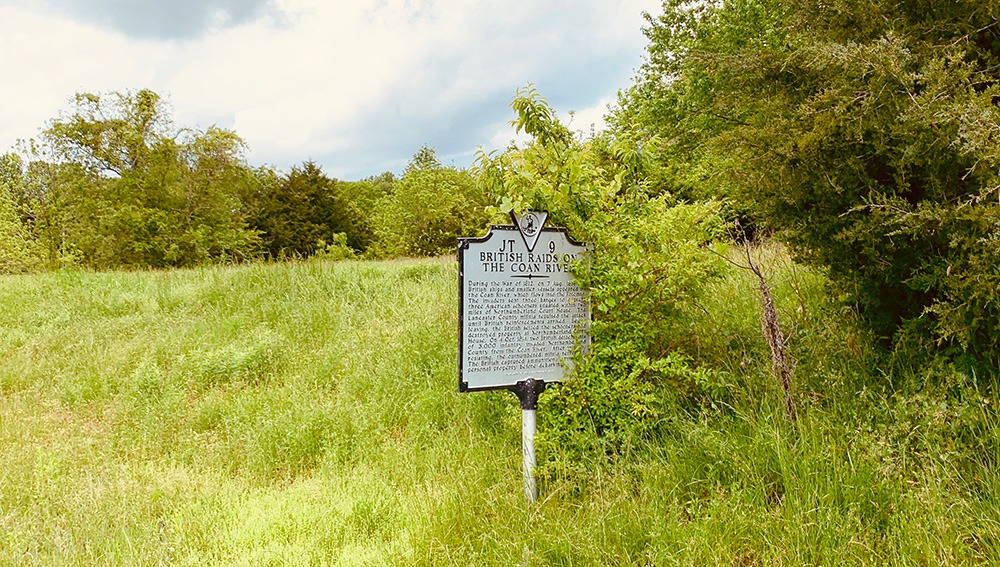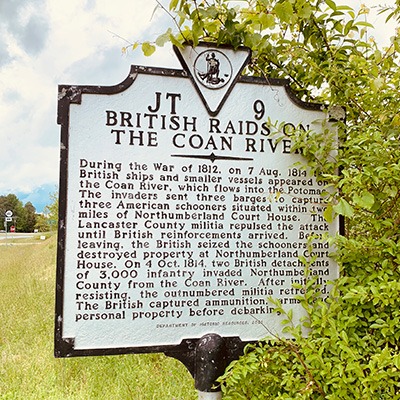
Historical Marker JT- 9; Located at the intersection of Northumberland Highway (U.S. 360) and Forrest Landing Road (County Route 612), on the right when traveling west on Northumberland Highway
The War of 1812 is certainly not as notorious as the Revolutionary War or Civil War, but certainly played an important role in shaping Northern Neck history. During the War of 1812, Virginia acted as an especially important battleground due to its close proximity to the capital. The Chesapeake Bay became the number one target as the British attempted to disrupt American trade and commerce. Cities and towns along the Potomac, James and Rappahannock Rivers were devastated by British raids and occupancy.
In the later stages of the war, the British made headquarters at Tangier Island where they could easily conduct raids on the neighboring Northern Neck counties. Troops wreaked havoc by burning ships and houses, stealing crops and livestock, and devastating the area with their quick hit-and-run attacks.
 One such raid took place on the Coan River in Northumberland County. Today there is a road marker at the location bearing the following inscription:
One such raid took place on the Coan River in Northumberland County. Today there is a road marker at the location bearing the following inscription:
During the War of 1812, on 7 Aug. 1814 ten British ships and smaller vessels appeared on the Coan River, which flows into the Potomac. The invaders sent three barges to capture three American schooners situated within two miles of Northumberland Court House. The Lancaster County militia repulsed the attack until British reinforcements arrived. Before leaving, the British seized the schooners and destroyed property at Northumberland Court House. On 4 Oct. 1814, two British detachments of 3,000 infantry invaded Northumberland County from the Coan River. After initially resisting, the outnumbered militia retreated. The British captured ammunition, arms, and personal property before debarking.
From Northumberland, British troops continued on to occupy Tappahannock in Essex County in December where they continued to plunder and burn. They then retreated without engaging and headed towards Warsaw. They met with opposition near North Farnham Church in Richmond County where they engaged briefly with American militia before retreating to their ships and soon after left the area entirely.
At the end of December, the Treaty of Ghent was signed, which when ratified in February, would officially bring the war to a close.
Sources:
1812va.org
www.dhr.virginia.gov
Northern Neck of VA Historical Society
www.fredericksburg.com





